Eurozone confidence indciators generally deteriorated in March.
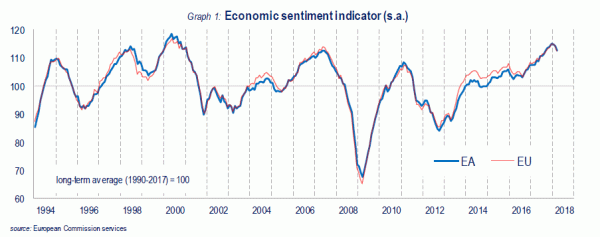 The European commission noted in the release:
The European commission noted in the release:
Euro area developments
In March, the Economic Sentiment Indicator (ESI) decreased markedly in both the euro area (by 1.6 points to 112.6) and the EU (by 1.9 points to 112.5).1 While this is the third consecutive drop, the indicators remain at elevated levels.
The deterioration of euro-area sentiment resulted from drops in industry, services and retail trade. Confidence among consumers remained unchanged, while it increased among construction managers. The ESI weakened in all the five largest euro-area economies; significantly so in Germany (-2.4), Italy (-1.8) and Spain (-1.2) and, less so, in the Netherlands (-0.5) and France (-0.4).
EU developments
The marginally stronger decrease of the headline indicator for the EU (-1.9) was mainly due to the marked deterioration of sentiment in the largest non-euro area EU economies, the UK (-4.2), and Poland (-2.0). In line with the euro area, confidence deteriorated strongly in industry, services, and retail trade, while it increased slightly in the construction sector and remained unchanged among consumers. The fall in EU confidence in the financial services sector was slightly less pronounced than in the euro area.
By contrast to the euro area, EU managers’ employment expectations improved in retail trade, while they remained broadly stable in services. Price expectations differed from the euro area mainly in retail trade, where they decreased markedly.
Full release here.




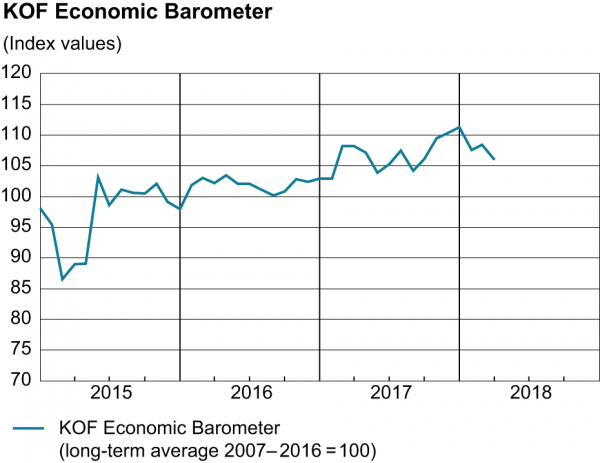
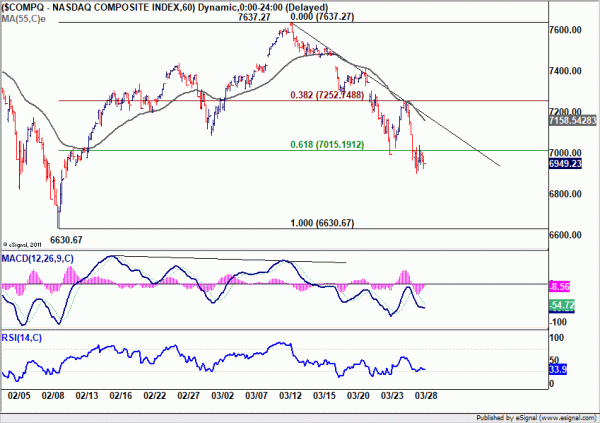
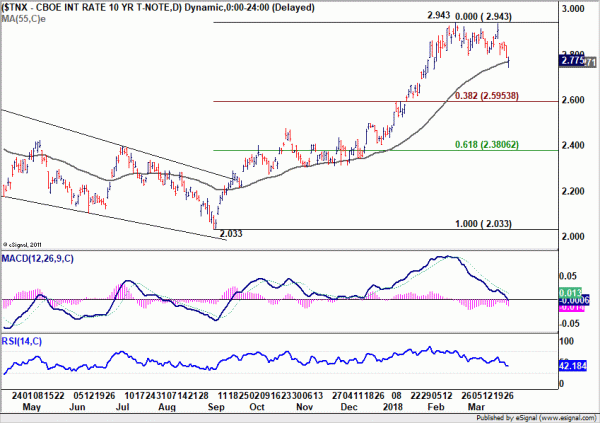
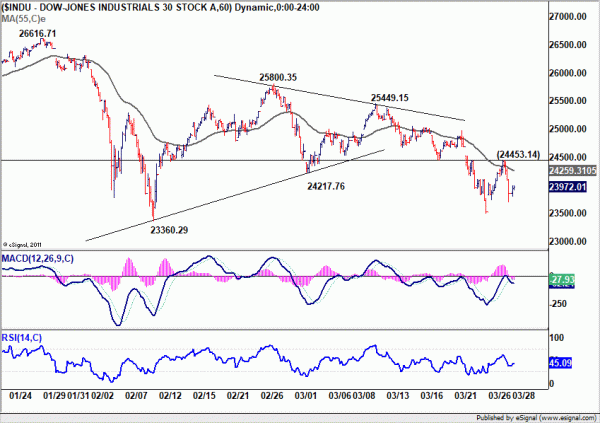
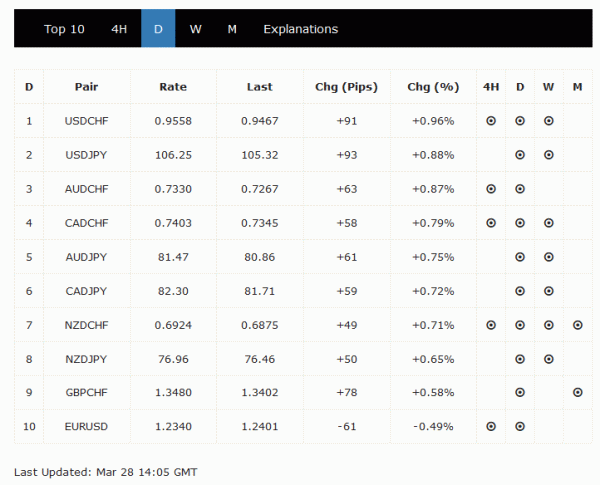
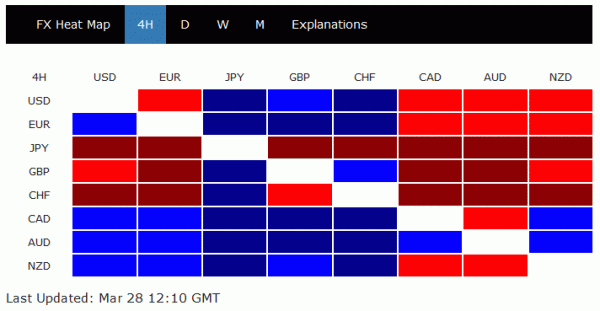
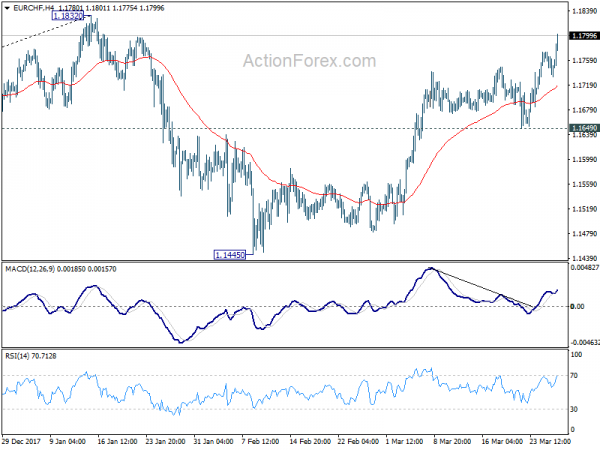
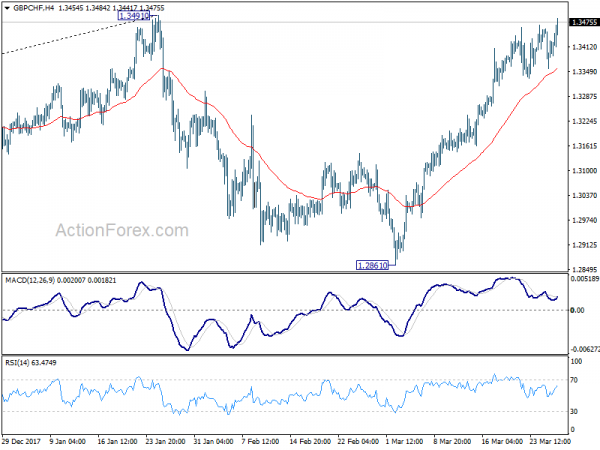
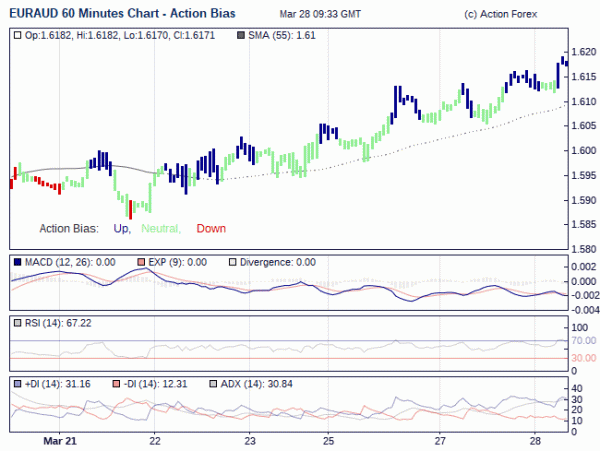
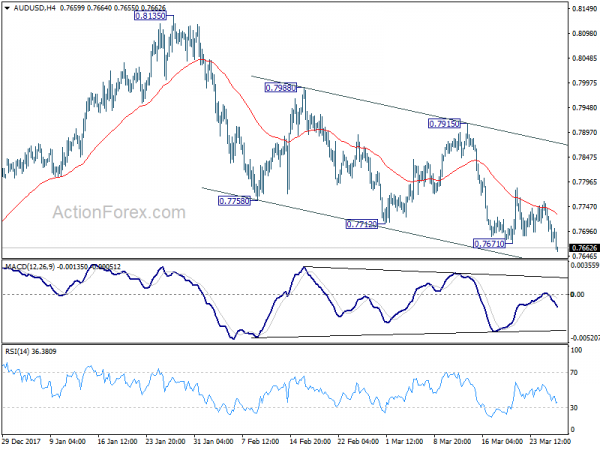
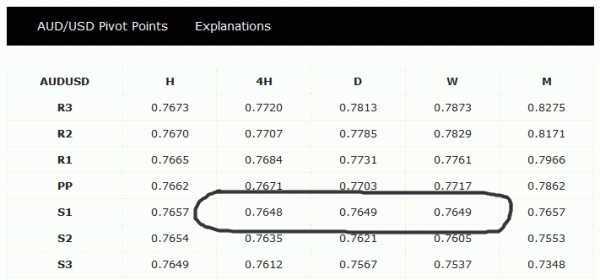
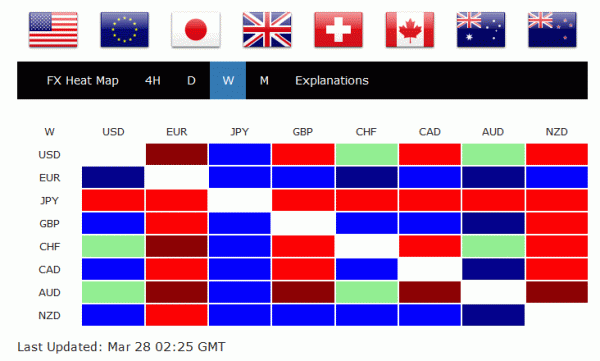
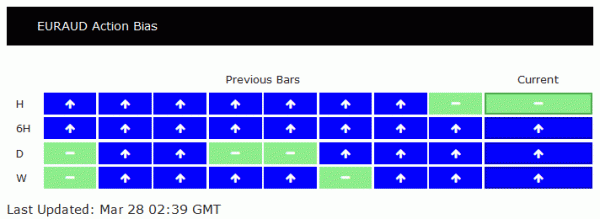
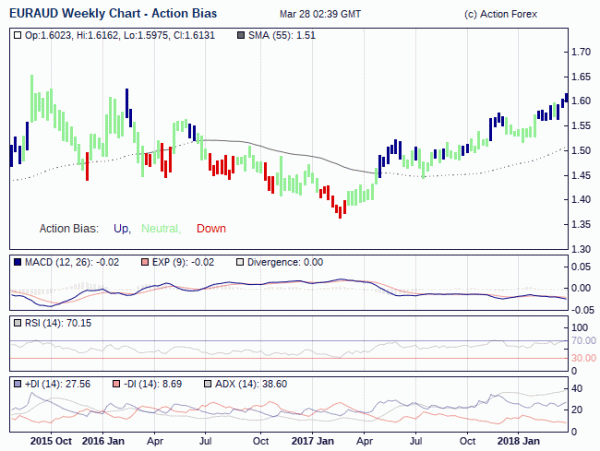
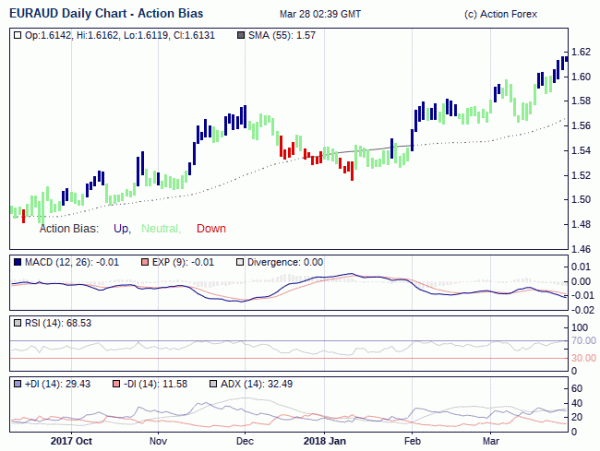
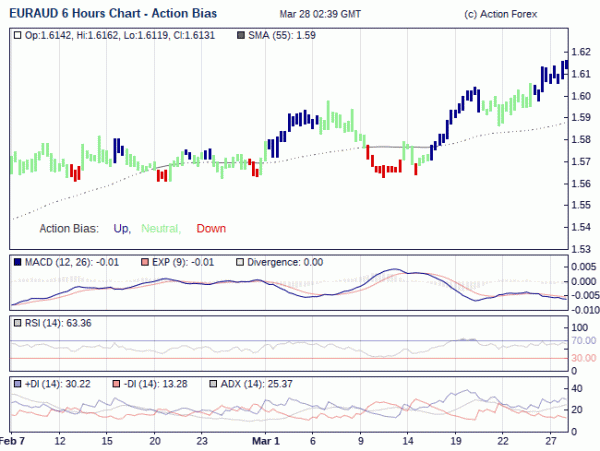
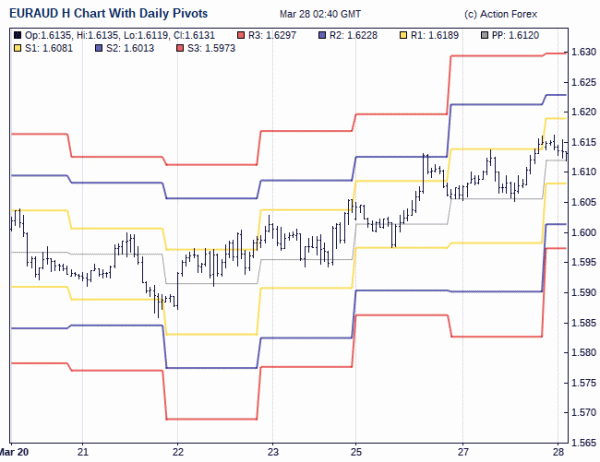
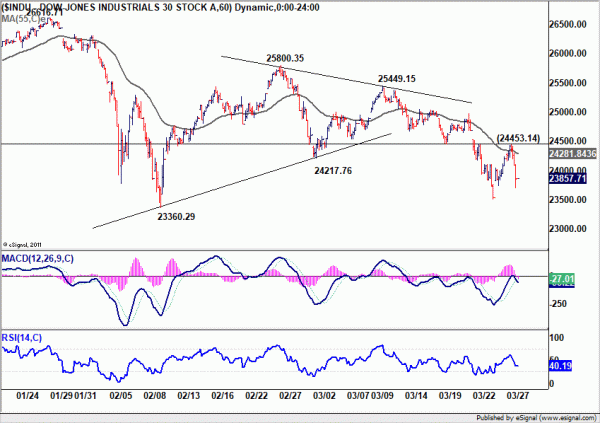
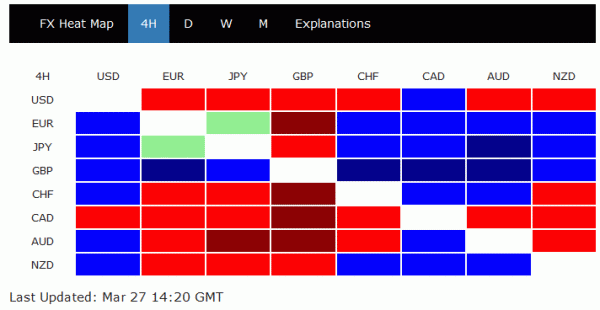
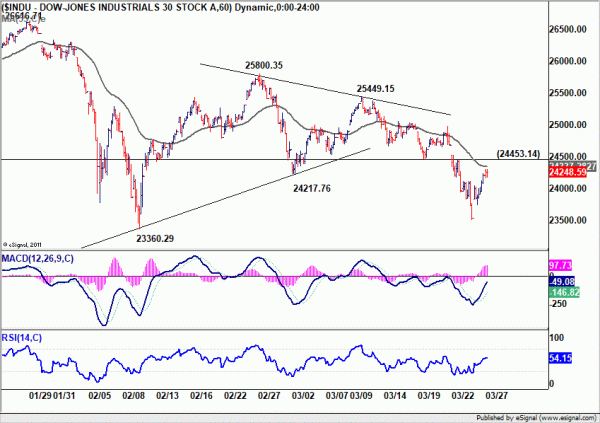
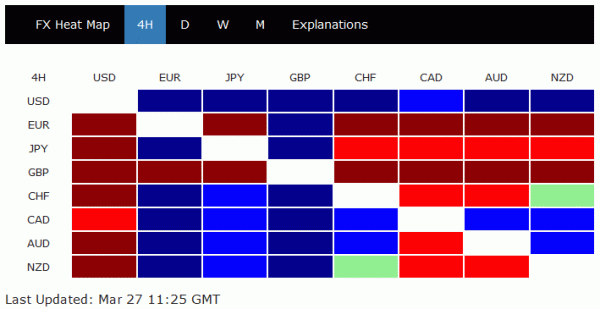
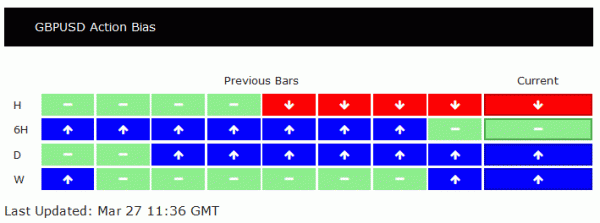
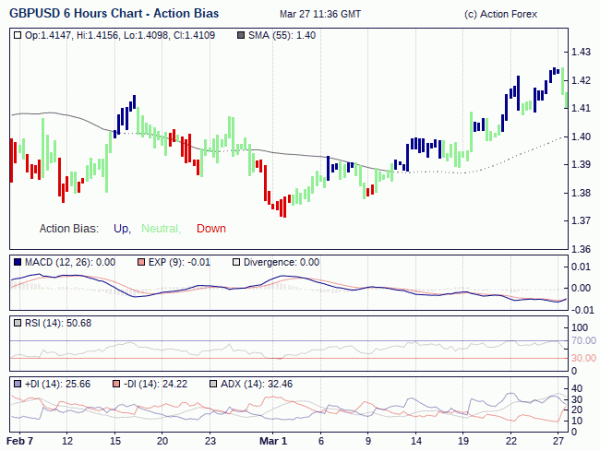


German unemployment rate hit record low, but no support to Euro
German unemployment dropped -19k to 2.373m in March, more than expectation of -15k.
Unemployment rate dropped from 5.4% to 5.3%, met expectation. That’s also the lowest level on record.
EUR, however, receives no support from the data. It’s trading down against all major current in the current 4H bar. And for the week, EUR is also reversing much of the earlier gains and is turning mixed.